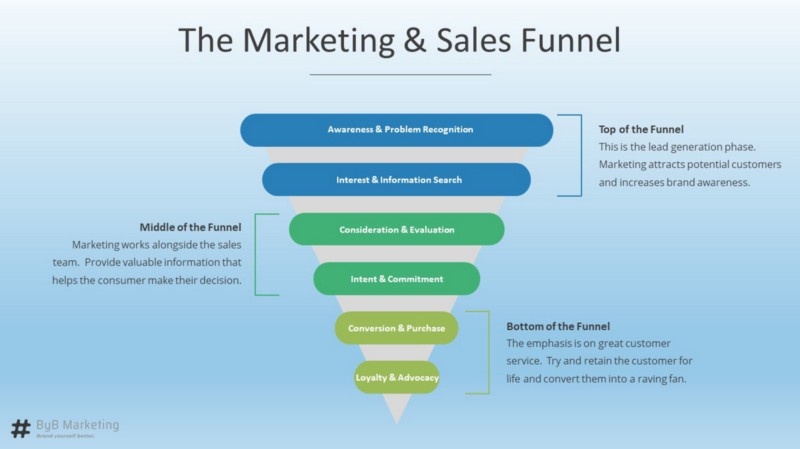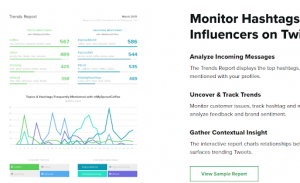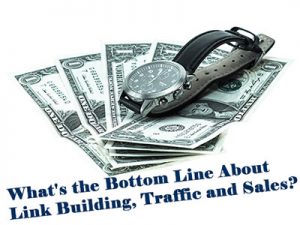Email Marketing has become one of the most popular and effective marketing method and relationship management tool used by businesses since it rose quickly into prominence with the internet about 25 years ago.
Pretty quickly, most people had a personal email address and were checking their email, making it a powerful tool to communicate with people.
This article explores the use of email as a marketing tactic.
What is Email Marketing?
Short for electronic mail, email is the sending of messages to one or more recipients, distributed by electronic means via the internet. Email marketing is a digital marketing tool that uses email to develop relationships with prospective customers and maintain and strengthen relationships with current customers. The end goal is to influence these people to make a purchase and be ongoing customers.
“Companies often list email as one of their most powerful marketing channels. To this day, the size of your email list is a demonstration of your reach and thought leadership. However, your email marketing campaigns should be part of a holistic approach to educate your contacts about your company.” (Georgieva, 2012)
The popularity of email marketing has been a part of the ongoing trend away from a product-focused marketing strategy to a customer focus of customisation and relationship management, to satisfy the needs of each customer.
Email marketing has been growing since the mid-1990s and is a widely used marketing tool by the majority of B2B and B2C companies. In 2015, one study indicates that over 80% of firms use email as part of their marketing strategies (See Zhang, Kumar, & Cosguner, 2017).
The benefits of email marketing
Email is a powerful marketing tool, with several benefits for businesses using it to build customer relationships and increase sales. Using their database of email addresses, businesses can design email marketing campaigns, personalised for diverse groups of leads and customers. Some of the benefits of email marketing are:
• Brand awareness?—?keeps the brand top of mind and people informed about what you offer.
• Speed?—?a quick output and quick response for lead generation.
• Segmentation?—?allows you to selectively email members of your database depending on their behaviours.
• Cost-Effective?—?Low cost per contact for customer acquisition. A better return on investment many other forms of marketing.
• Targeted?—?you are sending relevant materials to your audience.
• Customer Dialogue?—?encourages a two-way dialogue with customers, where communication is one way with many other marketing methods.
• Trackable?—?Analytics allows you to track the performance of your emails.
• Conversion?—?turn prospects who are interested in your industry or your products/services into customers.
• CRM?—?customer relationship management helps maximise the lifetime value of customers by increasing customer retention and repeat purchases.
Objectives of email marketing
Email Newsletters are great not only for marketing to prospects but also for nurturing your existing customers. Some of the objectives of using email marketing are:
• Send recipients to other marketing content such as landing pages with exclusive offers, blog posts or other valuable content.
• Communicate with a community, customers, employees or other stakeholders to generate a reaction or a result.
• Inform the reader about a new offer or send them to a blog post.
• Maintain and develop long term relationships with current customers.
• Motivate customers to finish a purchase who have items in their shopping cart that was abandoned.
• Increase sales by converting more leads into customers and selling more to previous customers.
Analysing the results of your email marketing
One of the major benefits of email marketing is the ability to monitor subscriber engagement and interest.
It is a process of continual improvement?—?testing and tweaking your email content and database management. To analyse the performance of your email marketing, there are several key metrics to help measure the performance of each campaign against previous benchmarks.
For example, analysing the interaction that people have with your website after they click on a link, this can help you pinpoint how to improve the user experience on your website. Two different landing pages could be used to test which one receives better results.
• Open rate is the proportion of people opened the email. But this can be an inaccurate gauge as customers who are active in opening a firm’s emails may not be active in purchasing and vice versa. Some people are more responsive to emails. Some people like to browse. Other people may purchase but never open their emails. Therefore, it is important to track more factors than just your open rate, such as tracking your click-through rates and conversion rates.
• Bounce rate is the total emails sent that could not be delivered to the recipient’s inbox, If one particular campaign has a lower than average delivery rate (high bounce rate), examine the subject line and content of that message to check if there’s something that could have flagged it as spam.
• The list growth rate is how fast your email list is growing. This is calculated by subtracting opt-outs and hard bounces from the number of new email subscribers gained per month.
“Be clear to your target market about what they will get out of subscribing to your emails. Give them a clear description of what the value proposition is. For example, will your emails offer: (1) tips and tools on how to run their business more efficiently, (2) product updates from your company, or (3) special offers via email? Your audience will want to know “why” they should subscribe before they decide to clutter their inbox with even more emails.” (Georgieva, 2012)
• Unsubscribe rate is the proportion of people in your database who unsubscribe from receiving your emails. This is not always a reliable picture of the health of your email list, however, as many subscribers no longer want to receive emails will not bother to go through the formal unsubscribe process. They will just stop opening email messages and delete them instead.
• Click-Through Rate (CTR) is a foundation of email marketing analytics, as it indicates whether the message was relevant and the offer compelling enough to check out. This measure how many people click on the offer or other link in your email.
• Conversion rate is the proportion of people who clicked a link and completed the desired action, such as purchasing a product. This is also dependent on factors beyond the original email message, such as the quality of your landing page or the offer itself.
“Conversion rate is the ultimate measure of an email campaign’s effectiveness. The higher your conversion rate, the more relevant and compelling the offer was for your audience.” (Georgieva, 2012)
• Revenue per email measures the ROI of an email campaign, calculated by dividing the total revenue generated from the campaign by the number of emails sent. This is only relevant if you generate a lot of direct sales from email campaigns.
Spam
Because it is so cheap and accessible (anyone with an email address can send a mass-email), email is used as a tool to spread spam emails. Spam is unsolicited digital communication sent out in bulk to random email addresses without consent.
Spam has caused email marketing to leave a bad taste in the mouth for many people. We’ve probably all received an email or two from a Nigerian royal or long-lost family member promising us millions of dollars.
“Low production costs spur greater production, inducing entry to the industry by legitimate and not-so-legitimate marketers, which further increases the volume of email messages sent. As a result, consumers are awash in a sea of ads and information, some useful and some not.” (Pavlov, Melville & Plice, 2007)
The significant difference between spam and genuine email marketing is having an opt-in policy. If businesses keep rigorous with this, it means they are only emailing people who consented to receive them, and the business will not get any trouble. Most countries around the world now have anti-spam laws, so its best businesses are cautious with who goes into their emailing database.
Database management
A database can be powerful. But only if managed correctly.
A database should be continuously updated to make sure it stays relevant. If a user has been emailed 20 times and has never opened one of those emails, they probably should not be emailed once a week. You might email them once every 6 months or remove theirs completely. Your metrics will tell you who is no longer engaging.
Database members should be categorised so you can best meet their needs. Group them based on some common characteristics and behaviours.
Continually work to add new contacts to your email database, as the natural churn rate of an email list can be 25% or even more per year. Make sure you are gaining new relevant people on your database by providing a benefit to them by being on your mailing list (exclusive offers, gifts, industry updates etc).
Software such as Mailchimp or Constant Contact will help you manage your database as well as setting up your email marketing. Some systems will also you to set up your whole sales funnel with landing pages for lead generation, as well as for analytics and reporting to allow you to monitor the performance of your email marketing campaigns.
Email marketing strategy
Email marketing is about more than sending your latest offer out to your database once a month. Businesses must think of it like designing marketing communication campaigns?—?because they are! The objectives of email marketing should be clearly defined, who the target recipients are, the content must be developed to fit the purpose. Make sure it provides value!
The email campaign should be tested on a small sample, tweaked and then sent to the segmented members of the database. The results should then be measured to see what you can do better next time.
As well as immediate results, businesses should consider how their strategy will affect their future profitability. If your business sets up lead nurturing, emails are sent out automatically to new leads, according to the schedule you set up. lead nurturing is all about understanding the nuances of your leads’ timing and needs- tightly connected series of emails with a coherent purpose and full of useful content.
Tying a series of emails to a specific activity such as joining a mailing list, and then sending them an automated series of emails to learn more about their behaviour and potentially influence a purchase. The lead is qualified over a period with automation, saving a business time and energy.
Leads should be segmented into groups of buyers as you learn more about them to better meet their needs and provide them value. Targeted marketing has a far better return on investment than mass marketing?—?so do not be tempted to send the same email to all your contacts!
Email is a vital component of a marketing and sales funnel?—?where the objective is to turn as many leads into sales as possible. But email should be part of an integrated marketing approach?—?email does not work in isolation.

Your marketing emails need to be complemented by other efforts, such as search engine optimisation and content marketing on social media. If you blog, send people to your blog via your email and encourage people to sign up to your newsletter at the end of blog posts.
Your marketing strategy should outline how your individual marketing efforts complement each other.
Email content
What goes into an email? Of course, this will vary depending on the firm and its objectives. But there are some general rules when it comes to the content of email marketing.
The email title must convince the recipient to open the email. This is key. It must be related to the content of the email (stay away from clickbait), but at the same time be compelling enough that the recipient is curious enough to open the email. Because many people check their email via smartphones, long titles will not be displayed in full. Aim for 5 to 9 words.
“In the Subject: line Each word makes a critical difference in whether your message is opened at all. Once its opened, you only have seconds to capture the readers imagination. You have to grab their attention and keep it.” (Sterne, & Priore, 2000)
Your content must be brief and relevant for the recipient. Grab their attention right away, by containing the most information in the first paragraph. Try and keep it the length to under 100 words.
Use a personalized greeting at the beginning of the email and a clear call-to-action at the end of the email. Include a couple of hyperlinks to other useful content such as a blog or video on your website, or a custom landing page that contains more information (find out more, or to order).
An option to unsubscribe must be available. Email marketing software with automatically using an unsubscribe option.
The layout and design of email marketing are important?—?especially if it is a newsletter. But you do not want to go over the top trying to make it aesthetic, simple can be beautiful. Try to use a maximum of two colours.
Include one or two images in the email, one of those can be the company logo for brand awareness. Make sure the images have alt text for those not viewing the email in HTML (quite often images are turned off automatically).
Your contact information as well as social-following buttons for your social media accounts should be at the bottom of the email.
How many emails should you send?
The right number of emails to send is difficult to pinpoint, as it will depend on your customers. If you are emailing qualified leads, it might be once or twice a week. Other customers, once a month or once a quarter might work better. It will depend on the engagement level of your audience.
“Sending the right number of emails is critical for the firm’s profitability, especially since most customers tend to complain about the large number of emails sent by firms.” (Zhang, Kumar, & Cosguner, 2017)
Many companies start to send fewer emails to keep subscribers. However, the frequency of emailing does not necessarily negatively impact subscriber retention. There can be email overload, for sure. But also, ask yourself if you are emailing the right people with the right message.
Digital & Social Articles on Business 2 Community
(11)











